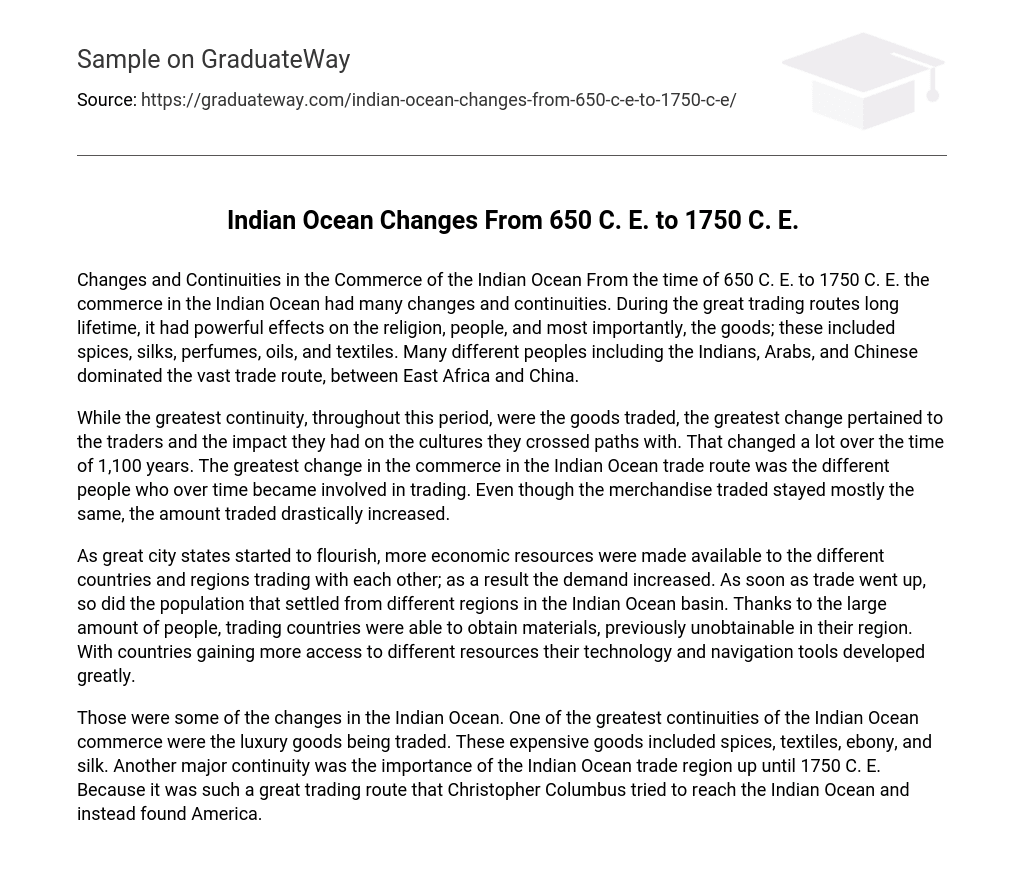Changes and Continuities in the Commerce of the Indian Ocean From the time of 650 C. E. to 1750 C. E. the commerce in the Indian Ocean had many changes and continuities. During the great trading routes long lifetime, it had powerful effects on the religion, people, and most importantly, the goods; these included spices, silks, perfumes, oils, and textiles. Many different peoples including the Indians, Arabs, and Chinese dominated the vast trade route, between East Africa and China.
While the greatest continuity, throughout this period, were the goods traded, the greatest change pertained to the traders and the impact they had on the cultures they crossed paths with. That changed a lot over the time of 1,100 years. The greatest change in the commerce in the Indian Ocean trade route was the different people who over time became involved in trading. Even though the merchandise traded stayed mostly the same, the amount traded drastically increased.
As great city states started to flourish, more economic resources were made available to the different countries and regions trading with each other; as a result the demand increased. As soon as trade went up, so did the population that settled from different regions in the Indian Ocean basin. Thanks to the large amount of people, trading countries were able to obtain materials, previously unobtainable in their region. With countries gaining more access to different resources their technology and navigation tools developed greatly.
Those were some of the changes in the Indian Ocean. One of the greatest continuities of the Indian Ocean commerce were the luxury goods being traded. These expensive goods included spices, textiles, ebony, and silk. Another major continuity was the importance of the Indian Ocean trade region up until 1750 C. E. Because it was such a great trading route that Christopher Columbus tried to reach the Indian Ocean and instead found America.





